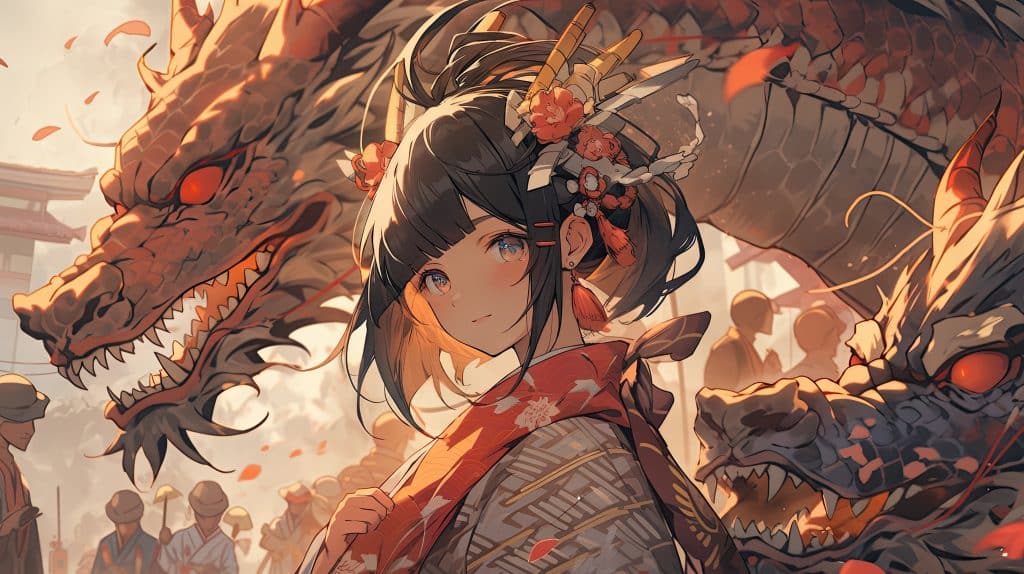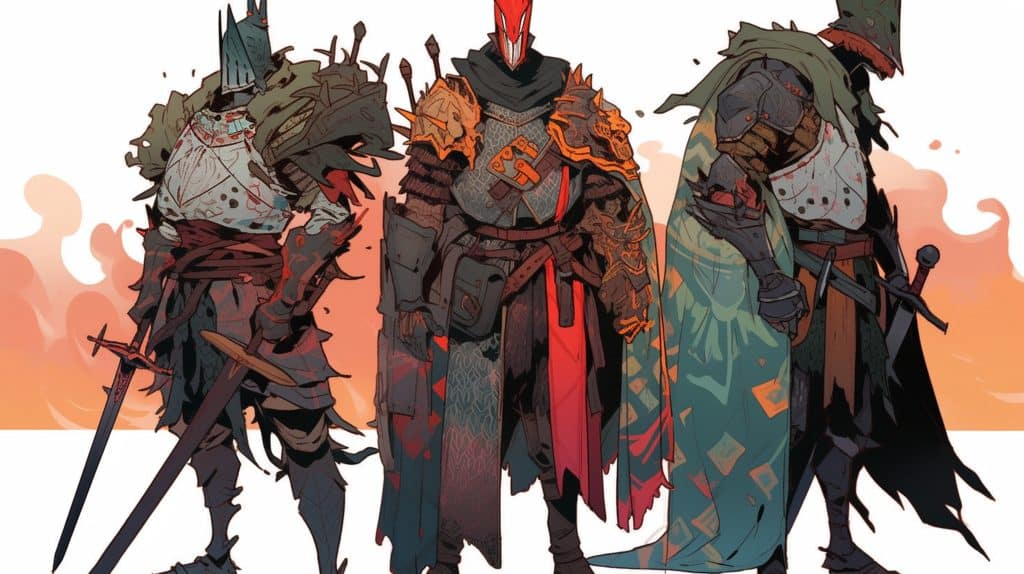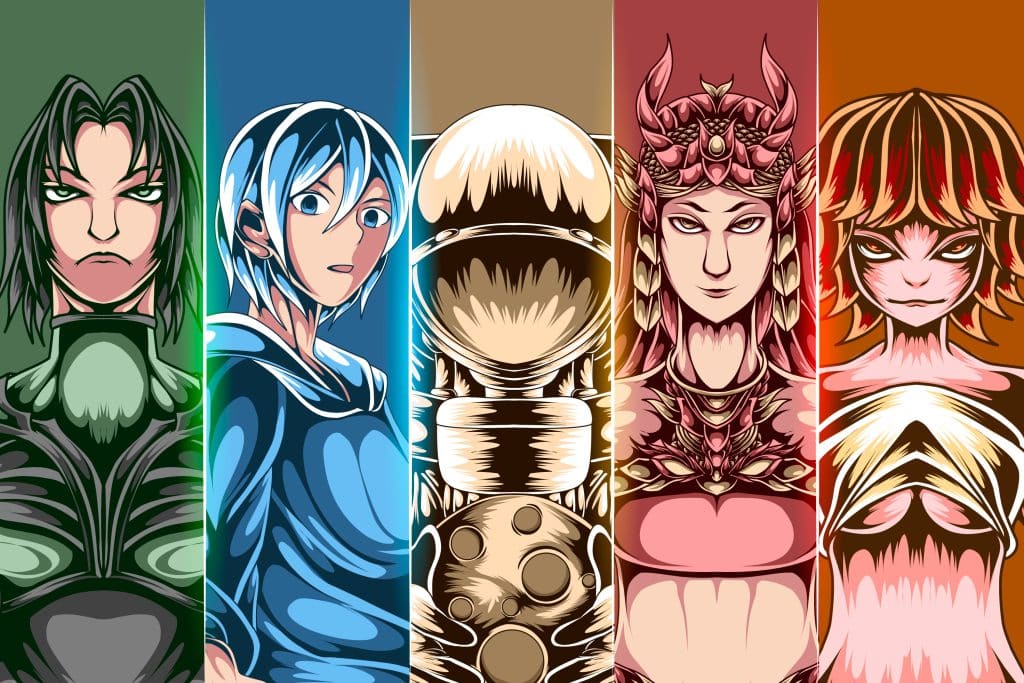Exploring the evolution of Anime: How Japanese animation conquered the world

Evolution of anime from a niche cultural interest to a global phenomenon reflects a journey of artistic innovation, technological advancement, and internationalization, captivating diverse audiences worldwide and reshaping the landscape of animated entertainment.
The journey of anime, from its humble beginnings as a localized art form to its current status as a global cultural powerhouse, is a fascinating narrative of innovation, adaptation, and unwavering creative spirit.
This unique animation style has transcended geographical and linguistic barriers, captivating audiences far beyond Japan’s borders.
What exactly fueled this remarkable transformation, and how did it manage to carve out such a significant presence in the global entertainment sphere? Let’s explore the intricate evolution that made anime a formidable force in the industry.
The roots and early growth of Japanese animation
The evolution of anime can be traced back to the early 20th century, a period marked by experimentation and the burgeoning interest in animated cinema.
Japanese animators, inspired by Western pioneers like Walt Disney and Max Fleischer, began to develop their own unique stylistic approaches.
This early phase was characterized by short, often propaganda-driven films during the war, and later by more artistic and commercially viable projects. Post-World War II, the industry experienced a significant shift.
Economic recovery and technological advancements, particularly in television broadcasting, provided new avenues for animated content.
This era saw the emergence of studios like Toei Animation, which played a pivotal role in establishing the foundational elements of what would become modern anime.
Their early productions, often adaptations of popular manga or folk tales, laid the groundwork for the evolution of anime and its future global influence.
Pioneering techniques and stylistic foundations
Early anime artists experimented with limited animation techniques, a cost-effective method that differentiated their productions from the more fluid, but expensive, American counterparts.
This necessity gave birth to a distinctive visual language that emphasized dynamic character poses, dramatic camera angles, and expressive facial animations, hallmarks that shaped the evolution of anime into a recognizable art form.
- Limited animation: A technique reducing the number of cels used, saving production time and cost.
- Character archetypes: Development of recurring character roles and designs that resonated with audiences.
- Dynamic visual storytelling: Emphasis on visual flair, action sequencing, and emotional expression.
Moreover, the early integration of music and soundscapes, often drawing from traditional Japanese performing arts, added another layer of depth to these nascent animations.
This holistic approach, where visual art, storytelling, and sound merged, set a precedent for the evolution of anime as an immersive and emotional experience. By the 1960s, anime was firmly establishing itself within Japanese popular culture.
Series like Astro Boy demonstrated the potential for serialized storytelling and character development, serving as a turning point in the evolution of anime from children’s entertainment to a sophisticated medium.

The rise of television and genre diversification
The advent of television in Japan proved to be a catalyst for the evolution of anime, transforming it from a cinematic novelty to a household staple.
The 1970s and 80s became a golden age, with series like Mazinger Z and Gundam popularizing the mecha genre, while Sailor Moon introduced magical girl tropes that inspired audiences globally.
Sports anime like Captain Tsubasa and countless others showcased how animation could capture emotional depth and competition. This diversification marked one of the most creative stages in the evolution of anime, where narrative complexity began to flourish.
Genre innovation and narrative complexity
This era was marked by fearless storytelling.
- Mecha: Explored war, humanity, and technology.
- Magical Girl: Promoted friendship and justice.
- Sports: Emphasized perseverance and teamwork.
- Sci-Fi & Fantasy: Created vast, imaginative worlds.
These innovations deepened emotional resonance with viewers, setting the stage for global recognition and ensuring the evolution of anime into a multifaceted storytelling medium.
The international explosion: 1980s to 2000s
The late 20th century marked a pivotal chapter in the evolution of anime, its transformation into a worldwide phenomenon.
Films like Akira (1988) and Princess Mononoke (1997) showcased artistic excellence and mature themes, changing global perceptions of animation.
Cultural exchange and fan communities
The internet accelerated this evolution of anime by connecting fans globally. Online forums, fan translations, and early streaming networks expanded accessibility and built passionate communities.
Companies like Funimation and Viz Media capitalized on this growth, while conventions turned fandom into celebration.
Series like Dragon Ball Z and Pokémon became global cultural icons, solidifying the evolution of anime into a respected global industry.
Digital age and streaming revolution
The 21st century digital boom revolutionized the evolution of anime once more. Streaming platforms like Crunchyroll and Netflix democratized access, breaking geographic barriers and bringing simulcasts to audiences worldwide.
Accessibility, legal streaming, and diverse content
Legal streaming restored revenue to studios and encouraged quality production, fueling the evolution of anime through innovation and accessibility.
- Global simulcasts: Near-simultaneous releases.
- Vast libraries: Old and new titles accessible globally.
- Language options: Catering to all audiences.
Social media and fan content furthered this evolution of anime, turning it into a global cultural conversation and an interactive art form.

Anime’s impact on global pop culture and media
The evolution of anime has profoundly influenced global pop culture, shaping Western animation, Hollywood cinema, and even fashion.
Its distinctive visuals and emotional storytelling inspired artists, filmmakers, and designers around the world.
Fashion, music, and gaming cross-pollination
The fashion industry adopted anime motifs, music collaborations thrived, and gaming embraced anime’s aesthetic depth.
These trends underscore the evolution of anime beyond screens, into lifestyle and identity expression.
Anime’s universality, exploring themes of identity and hope, demonstrates that the evolution of anime mirrors humanity’s own creative and emotional journey.
Challenges and future horizons for anime
Despite its triumphs, the evolution of anime continues to face modern challenges, including overworked animators and streaming economics. Sustainability and fair compensation are essential for the industry’s next phase.
Technological advancements and new narratives
Emerging CGI techniques symbolize another milestone in the evolution of anime, blending tradition with innovation.
The key lies in balancing artistry and technology to preserve anime’s emotional core.
Looking ahead, international collaboration and fresh storytelling promise to enrich the evolution of anime even further, ensuring it remains a powerful and transformative force in global entertainment.
| Key Point | Brief Description |
|---|---|
| 🚀 Early Growth | Post-WWII TV broadcasting and pioneering studios like Toei Animation laid foundations. |
| 📺 TV Boom & Genres | The 70s-80s saw diverse genres (mecha, magical girl) gaining popularity. |
| 🌐 Global Expansion | VHS, DVDs, and internet fan communities fueled 90s international growth. |
| 💡 Digital & Future | Streaming revolutionized access; future faces production challenges and new narratives. |
Frequently Asked Questions (FAQ) about the evolution of anime
The earliest forms of Japanese animation emerged in the early 20th century, heavily influenced by Western animated shorts. These early works were often experimental, short films, sometimes used for propaganda during wartime, and later evolved into more commercial and artistic endeavors as animation techniques progressed in Japan. They set the stage for later industry development.
The advent of television in post-war Japan was a game-changer for anime. It created a massive demand for regular programming, leading to the rise of serialized anime series. This spurred studios to diversify genres, experiment with longer narratives, and develop cost-effective animation techniques, ultimately cementing anime’s place in daily Japanese life and popular culture.
Anime’s international popularity was largely boosted by the spread of home video formats (VHS, DVD) in the 80s and 90s, allowing more people to access Japanese films and series. Crucially, the internet facilitated fan translations and online communities, creating a fervent global fanbase. Iconic series like “Dragon Ball Z” and Studio Ghibli films also played a major role in its global acceptance.
Streaming services drastically transformed anime distribution by offering vast libraries of content and global simulcasts. Platforms like Crunchyroll and Netflix made anime accessible to millions worldwide, often with subtitles or dubs available shortly after Japanese broadcast. This greatly reduced piracy, legitimized the market, and made it easier for new viewers to discover and engage with anime.
The anime industry faces several challenges, including demanding production schedules and relatively low wages for animators, leading to burnout. Sustainability of streaming revenue models and balancing traditional animation with increasing CGI integration are also key concerns. The industry strives to maintain creative integrity while expanding its global reach and adapting to technological advancements.





